 | In the Field
| In the Field
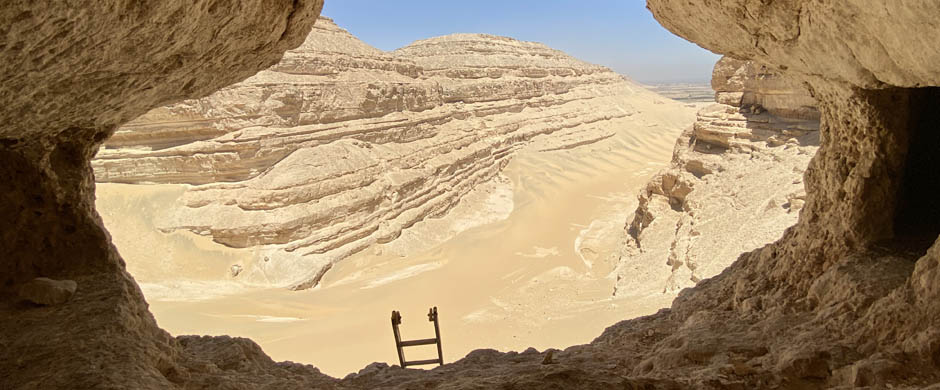
IFA Archaeology Journal
Aphrodisias 2020
Although the coronavirus reduced our campaign, we got much useful work done at Aphrodisias in 2020. For a month in June to July, our team focused on study in the depots, research for publication, and conservation.
The ancient monuments were carefully checked; all vegetation was cut and cleared from the site; new information panels were set up; and material for publication projects was documented in the depots.
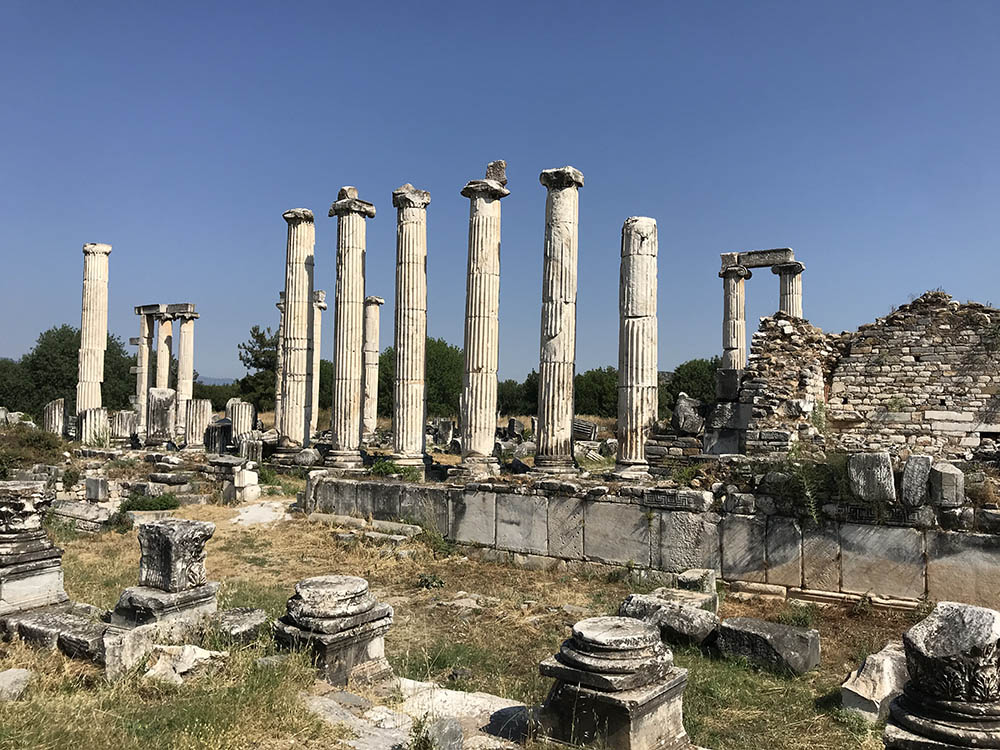
All objects to be included in the planned monograph on the Tetrapylon Street were drawn and photographed. They present a remarkable historical profile from Roman to Ottoman times. The study of finds for the forthcoming volume on the South Agora / Place of Palms was also completed.
New research on the inscribed dedication and carved ornament of the East Gate of the Place of Palms showed the monument belonged not in the mid-second century CE as previously thought, but in the late first century CE. Study of excavated pottery focused on Byzantine and Islamic material, particularly the material found in the pool of the Place of Palms and the Tetrapylon Street. Pottery study has revealed an interesting new historical narrative of post-antique Aphrodisias. Most striking are significant finds from the Byzantine ‘Dark Age’ (seventh to ninth centuries).
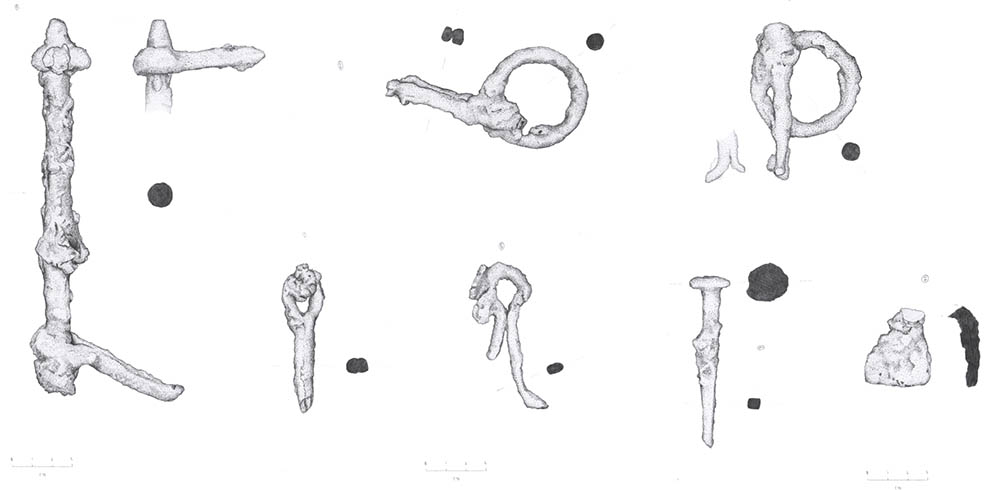
Work on inscriptions focused on preparations for a new monograph on Diocletian’s Edict of Maximum Prices and for our corpus of all inscribed texts from Aphrodisias. Two new inscriptions brought into the museum from the surrounding area were recorded: (1) a late Hellenistic funerary stele for a woman named Artemis daughter of Eupolemos, from Ataköy, and (2) a base of the Roman period, also with a funerary text, from Antioch-on-the-Meander.
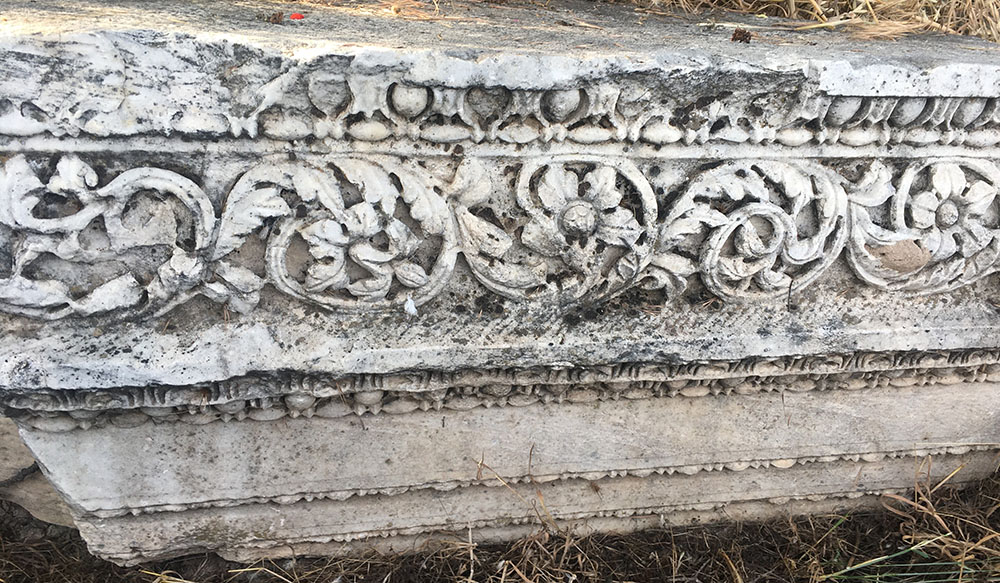
A relief from the Sebasteion was dismounted from its museum display for transport to an exhibition in Istanbul, and a delicately decorated Roman fountain basin, brought from Karacasu and restored by our marble conservators in 2018-19, was set up on a new base in the museum garden.
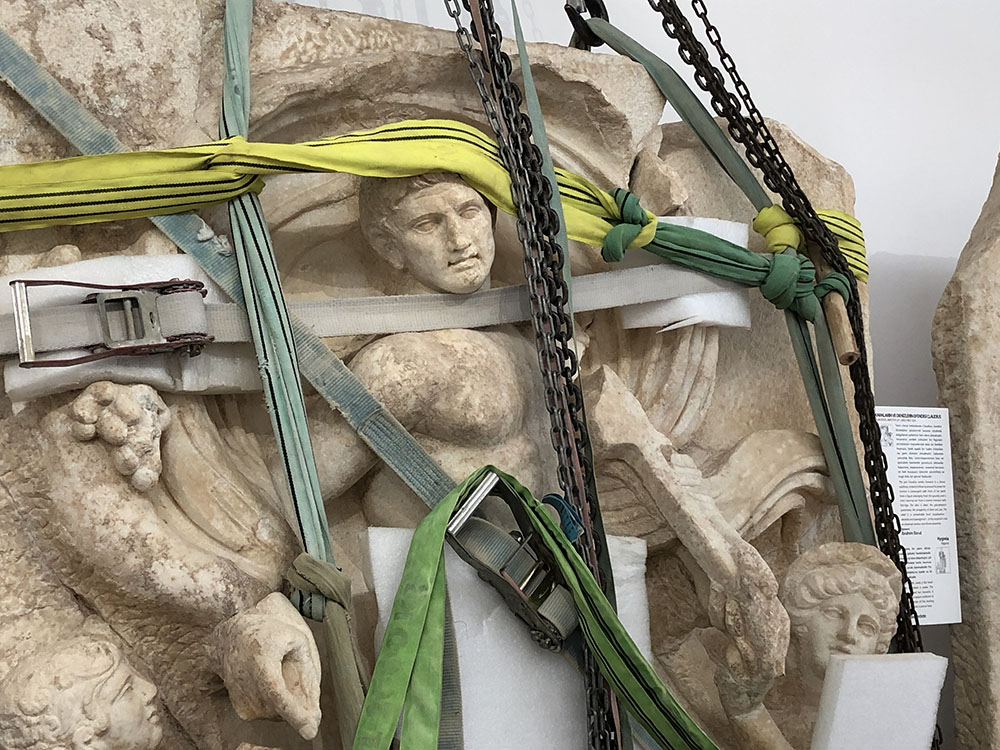
This year, the Aphrodisias team lost Jim Coulton, an inspiring archaeologist and architectural historian. He left a complete manuscript on the Temple of Aphrodite and its conversion into a Christian cathedral. He found out the precise original position of every block that was redeployed from the temple to make the church. Jim was a person of unfailing generosity and unusual modesty. He will be much missed at Aphrodisias.
Our Supporters
Aphrodisias
Aphrodisias Sevenler
Derneği, Izmir
Augustus Foundation
Lucien Arkas
British Institute at Ankara
Estate of Katherine F. Brush,
in honor of Christopher Ratte
Craven Fund, Classics Faculty,
Oxford University
Mica and Ahmet Ertegun
Headley Trust
Friends of Aphrodisias, New York
Friends of Aphrodisias Trust,
London
Ömer Koç
Peter Ian Kuniholm
Leon Levy Foundation
Merops Foundation
Lys McLaughlin Pike
Janko Rasic Architects PLLC
Shuffrey Fund, Lincoln College,
Oxford
Murat Ülker and pladis
Geyre Vakfı, Istanbul
Malcolm Hewitt Wiener
Foundation, Inc.
Sanam
The Explorers Club
The Egypt Exploration Society
Samothrace
Mary Lee Baranger
Andria Derstine
ExxonMobil Foundation
Walter G. Lehmann
Lehmann Family Foundation
Loeb Classical Library Foundation
MacDonald Iliad Endowment,
Archaeological Institute of
America
National Endowment for the
Humanities
Nicholas J. Pisaris Foundation
Rush Rehm
James L. Wescoat, Sr
Selinunte
Mary Lee Baranger
Julie E. Herzig and
Robert J. Desnick
Margaret M. Miles
Victoria Newhouse
Samuel I. Newhouse
Foundation, Inc.
Judy and Michael Steinhardt
Alicia Volk and Norman H. Volk
Malcolm Hewitt Wiener
Foundation, Inc.
Institute of Fine Arts Archaeology Fund
Mary Lee Baranger
Pepi Brooks
Ethelyn Adina Gordon
Sharon R. Herson and
Daniel Fleckles
Marsa Laird
A. Floyd Lattin
Jaime L. Neary
Elizabeth A. Oustinoff
Sharon Dunlap Smith
Paul E. Stanwick
Archaeological Conservation Field School
J. M. Kaplan Fund, Inc.
This list includes contributions to the projects received from October 31, 2019 – October 31, 2020.
Contact the Institute
Building Hours
Contact Information
If you wish to receive information on our upcoming events, please subscribe to our mailing list.



